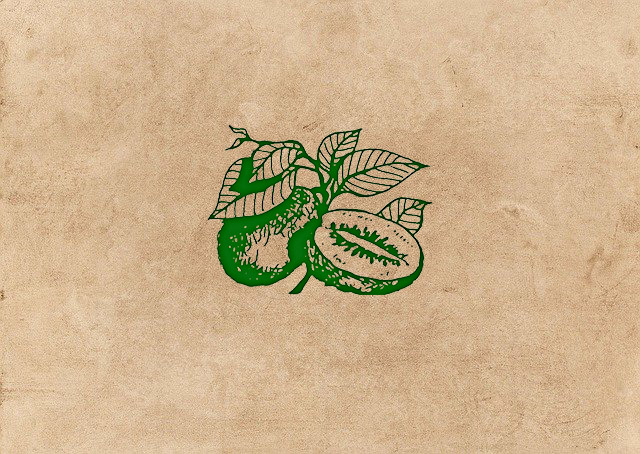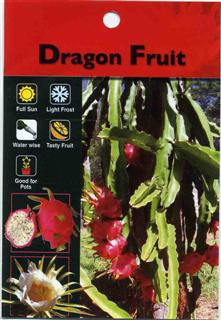Dragon Fruit
CategoryDragon Fruit (Pitaya)
FEATURES: Fast-growing climbing cacti which produce large, stunning, white and yellow fragrant flowers at night in summer to autumn, followed by decorative & tasty fruit. Fruit flesh is red or white depending on species. Contains small black edible seeds. Self-pollinating.
USES: Fruit flesh is delicious to eat fresh and chilled, and is lovely with lemon or lime juice or with ice cream. Use pulp in jams or as a base for drinks. The colour and shape of the fruit make them a most attractive garnish. Flower buds can be cooked a s a vegetable.
s a vegetable.
CONDITIONS: Perfoms well in temperate to tropical climates. Tolerates light frosts when mature but needs protection when young. Best in a sunny position away from strong wind but also grows in partiai shade. Train to climb on a trellis, post or other support structure. Grows in wide range of welldrained soil types high in organic matter. Avoid excessive humidity and soil moisture. Dryness in summer will induce flowering but watering during fruit development is helpful. Plant with minimum of root disturbance and ensure top of potting mix Is at ground level. Water in well at planting, every few days for the first 2 weeks, then as required. Fertilise a month after planting then lightly every 3 months with a balanced fertiliser.
- Hylocereus polyrhizus (red) Fruit up to 1 kg are spine-free, with red skin, dark red flesh.
Fruit of 1 kg or more are spine-free with bright red skin and translucent white flesh. Flavour is similar to a light melon.
- Hylocereus megalanthus (yellow) Fruit are sweet, tangy and have white flesh and yellow skin.
- Yarrahapinni Nursery Stuarts Point, NSW
- Hylocereus undatus
- Daley's Fruit Tree Nursery Kyogle, NSW














